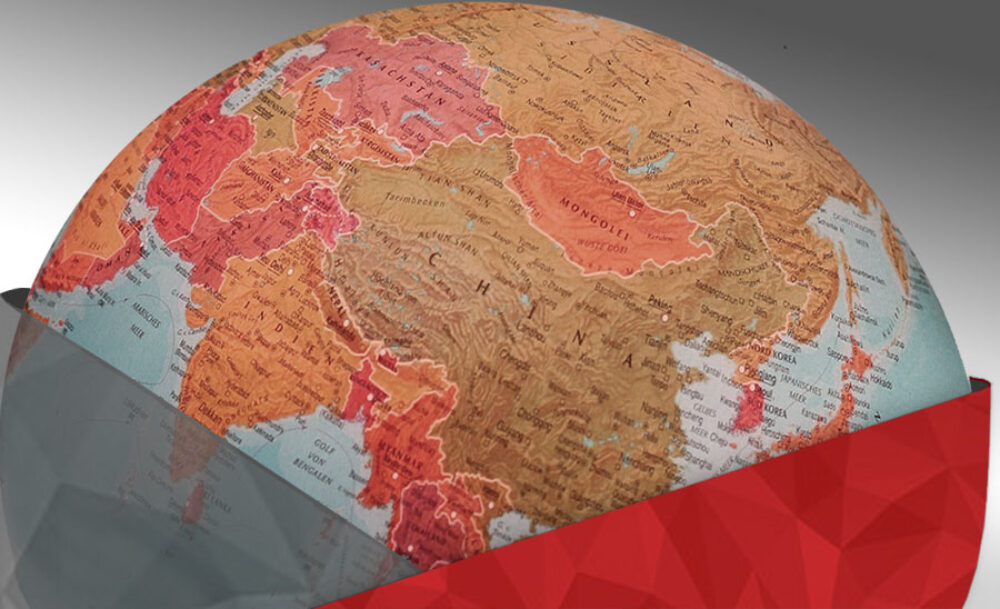Australia is slowly and unwittingly becoming a major player in the new Cold War ensuing between the US and China. Canberra’s forthright stance seeking an international inquiry into the origins of Covid-19 earned the wrath of the Chinese Communist Party, and not just in rhetoric. Recent moves take to impose steep tariffs on Australian barley and end ending beef imports from four Australian abattoirs this fortnight will cut deep. Michael Shoebridge notes, these decisions reflect a fall in consumer demand in China (owing to an economic slump) and thus relate to domestic economic considerations. That may be the case, but as PerthUSAsia Centre’s Jeff Wilson observes in the West Australian this week, China’s actions signal ‘that the firewall between our political relationship and economic relationship no longer exists.’
This fits with what the Chinese Ambassador in Australia, Cheng Jingye, warned about in his interview to the Australian Financial Review last month- that there might be repercussions if Canberra kept insisting on investigating the causes of the pandemic. It would appear that China’s actions are achieving some success in driving a wedge between the states and the federal government on the one hand and between the government and private industry on the other; further exacerbating divisions among academics and within the national security community Down Under.
Nonetheless, Australia managed a diplomatic win of sorts this week at the World Health Assembly, where it was able to gather unanimous support for its joint motion with the EU to establish a probe into the origins of Covid-19. China, eventually, lent its support to the motion on the condition that the review be conducted after the pandemic is over. The final resolution adopted at the WHA meeting is certainly different to that initially proposed by Canberra and stops short of the international inquiry focused on China’s conduct that was initially canvassed by Australia and the US. And while China may gain political mileage from the more unified diplomatic approach, it is worth noting that US President Trump continues to threaten the WHO with the withdrawal of US membership and funds.
On a side note, Taiwan’s exclusion from the WHA caused bitter disappointment to the small country, despite winning support from several nations, including the US, UK, Canada, Germany, France, Japan, New Zealand and Australia. Taipei has launched a protest at the WHO headquarters in Geneva.
Tensions across the region extend well beyond diplomatic wrangling at the WHA. This fortnight China and India were involved in several skirmishes along the disputed border in the Ladakh region and near Sikkim. It’s reported that both sides have reinforced their troop numbers in Ladakh. While the Indian army chief Manoj Naravane downplayed these incidents, analysts say that China is reacting to India’s infrastructure development along the borders in recent years.
Another stoush taking place in the shadow of Sino-Indian rivalry in South Asia is Nepal’s recent objection to India’s road building near the Lipulekh pass, which Nepal contests as its own. This dispute had been dormant for several decades and is a result of conflicting interpretations of the border since colonial times; however, India’s inauguration of a major road link in the region has drawn the ire of the Nepalese government, which has vowed to reclaim the region from Indian control ‘at any cost’. It’s important to note that the Lipulekh region is strategically critical for India and China, which explains New Delhi’s keenness to consolidate its control.
General Naravane was much less sanguine about this development and stated in a press conference last week that Kathmandu was acting at the ‘behest of someone else’. It’s clear to all observers that the current Nepalese government is close to Beijing and Kathmandu’s growing anti-India stance is directly correlated to that. Indian journalist Shekhar Gupta argues that China endeavours to turn Nepal into a ‘client state’ in the vein of Pakistan, which would be detrimental to India-Nepal relations in the long run.
As an aside, it’s interesting to note that India has taken over as the chairman of the Executive Board of the WHO this year and China’s latest actions could very well be targeted towards intimidating India on this front, even as the questions of Taiwan’s participation and Covid investigations remain current.
In other news, parts of Bangladesh and India have been hit by a devastating cyclone, Amphan this week, resulting in 14 deaths so far. Around 3 million people had to be evacuated from the coastal regions in both nations, complicating lockdown efforts to reduce the spread of coronavirus.
Significance to Australia
China’s bellicose rhetoric and aggressive diplomatic manoeuvres in the wake of Covid-19 have driven home a realisation, within many countries, of the economic and strategic costs associated with forming too close a partnership with the regional authoritarian power.
And as Ashley Townshend argues, China’s overarching aims vis-à-vis Australia also involve a desire to create a rift between the US and Australia. By time and again calling Australia the US’s ‘stooge’ or a ‘giant kangaroo that acts as the dog of the US’, Beijing plays a clever game with domestic Australian sentiments, as Townshend points out.
Although Australia has managed to secure a resolution at the WHA to investigate the causes of the pandemic, its success at finding anything substantial is another matter. Any independent review will require full-fledged cooperation from Beijing and importantly, the US.
There are difficult conversations ahead. Coherent, well calibrated policy framing across all tiers of government will be required if policy-makers are to stand-up to the tactics of increasingly difficult great powers. Australia needs to get better at playing the long game, while looking to others in the region, including Japan and Korea, not only for diplomatic unity and diversified supply chains, but also as important models of policy and practice.
AUTHOR
Aakriti Bachhawat is a Researcher with the Defence and Strategy team at the Australian Strategic Policy Institute, and Research Assistant at the Griffith Asia Institute.








